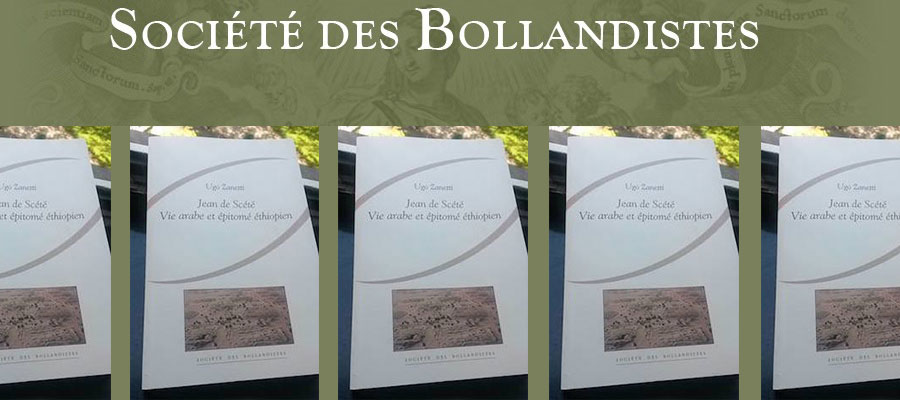Ugo Zanetti, ed. and trans. Saint Jean, higoumène de Scété (VIIe siècle). Vie arabe et épitomé éthiopien. Subsidia Hagiographica, 94. Bruxelles: Société des bollandistes, 2015.
From Société des bollandistes
The life span of St John of Scete (ca 595-685) is practically identical with the 7th century. He embarked on the monastic life at a young age and stayed at several monasteries, which was common at the time as he gradually withdrew to places further and further in the desert. Carried off by barbarians he remained in captivity for quite some time but finally succeeded in escaping and returned to Scete, where he became abbot. A man of a profoundly spiritual life he had famous disciples: the future patriarch John III, Abraham and George, Zacharias of Sakha, Menas of Thmuis, and many more. The great fame which he enjoyed in his lifetime suffered because of the date of his death, the day after Christmas, with the result that his Vita, written in the form of a homily by one of his successors, has only survived in two Arabic manuscripts which complement each other. It had been translated from a Coptic original and in addition to the realia which it gives, it also provides an insight into the great profundity of Coptic monasticim in the final decades of liberty before the first campaigns of islamization. It also reveals the importance attached to the works of Evagrius – as well as, of course, of Holy Scripture, the sayings of the Fathers of the Desert, etc. In addition to this fundamental work there is an Ethiopic epitome of the Vita of John of Scete translated from a lost Arabic original, thanks to which the evolution of the traditions concerning our hero can be measured.
